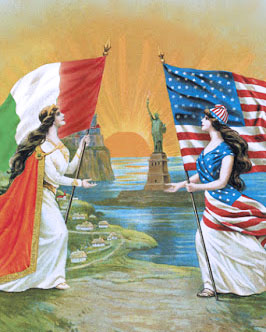As most readers realize, at the time of the American Revolution there was not a united country called Italy. The Italian peninsula was still divided among a collection of city-states and the dominions of the Pope. However, Italians played a considerable part in the American war for independence. Additionally, events in Italy, both historic and contemporary, inspired America’s Founding Fathers. The independence movement in Corsica, first against Genoa and later against France, was something many Americans looked to and the historic legacy of the Roman Republic had a major influence on the establishment of the United States government.
On July 1, 1777, the United States government assigned Ralph Izard as Commissioner to the Grand Duke of Tuscany, Ferdinando III, but he was never received and formal diplomatic recognition was never extended to the United States by Florence. That was most likely due to the opposition to the American Revolutionary War by the Austrian Emperor Joseph II whose empire exerted considerable influence and control over the peninsula. The Emperor was concerned that his own subjects might follow the American example. However, there was still a desire for commercial ties. The Republic of Ragusa had very close ties with Venice and established trade links with the United States through Italian agents Francesco Favi and Giovanni Fabronni. Oddly, the Venetian Republic took a hands-off approach to America. The Venetian Ambassadors in France and Spain were approached by American envoys, but Venice refused to recognize the American government and ignored efforts of correspondence. The Venetian reasons were both political and economic. It did not want to upset Austria to the north and it had a thriving and profitable trade with England at the time.
In 1796, the King of Naples officially recognized the United States of America, but it took until 1832 for full diplomatic relations to be established. This was due to the tumultuous events in Europe at the beginning of the 19th century. The Kingdom of Piedmont-Sardinia established diplomatic relations with the U.S. in 1802 and although the Papal States waited a long time to extend official diplomatic recognition to the United States, it opened ports to American trade in 1784 at the instigation of the Papal Nuncio in Paris, rather than by the Americans. The Republic of Genoa recognized the United States in 1791, while one of the last to recognize America was the Duchy of Parma, which recognized the American government in 1850. As it turned out, rather surprisingly, the American republic received as much support from the monarchies of Europe as it did from the republics.




